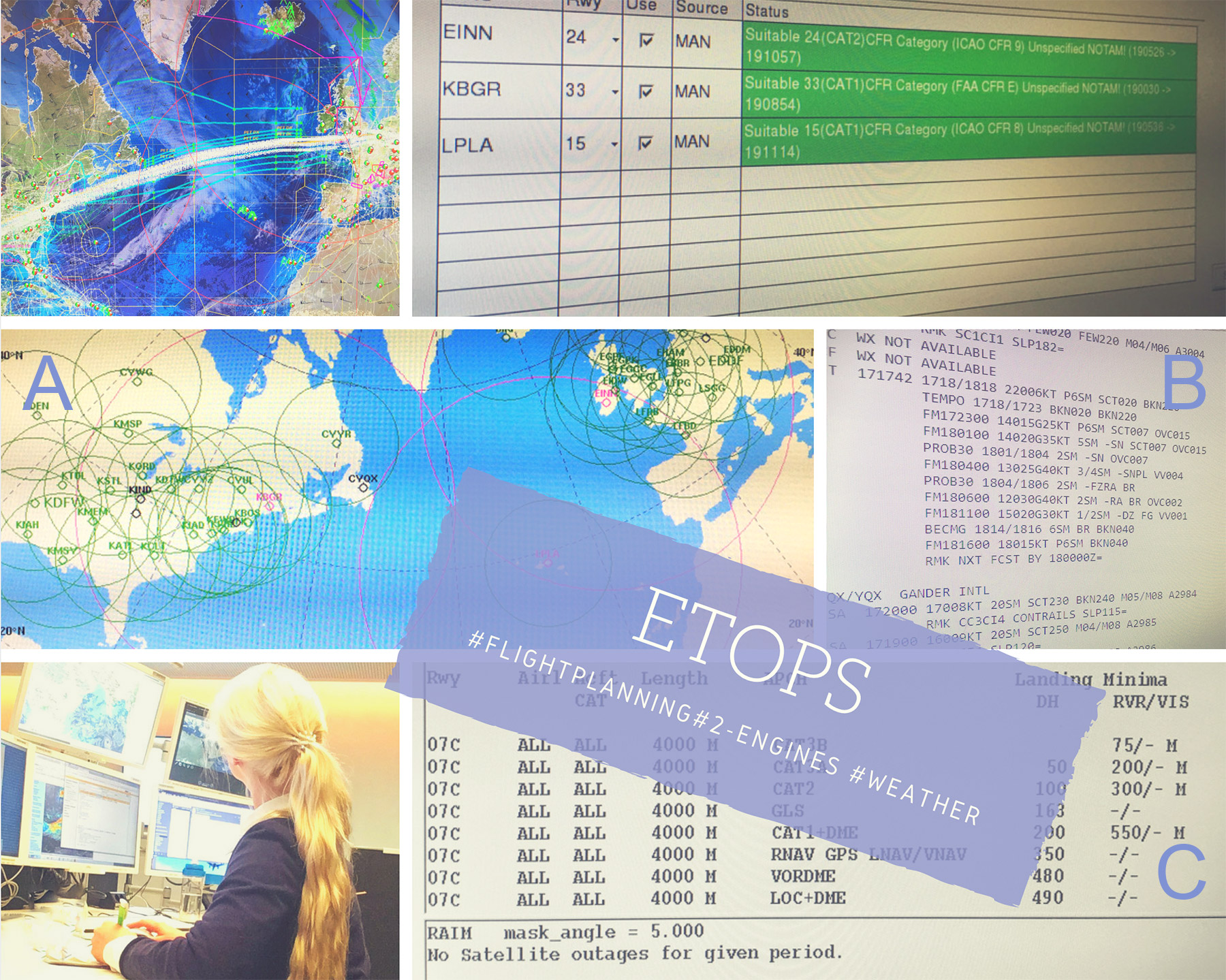ETOPS
„Winter is when your ETOPS scenario looks like A) because weather over Canada looks like B“
it‘s mainly 2 things we #dispatcher folks worry about during #flightplan preparation in #winterops.
1. Weather.
2. The things this weather does to both airport surfaces (braking action) and aircraft’s aerodynamics (icing is a deadly enemy).
For this post, let’s stick to 1 – from a purely #flightdispatch perspective (my private personality actually loves winter).
While summer weather phenomena are mostly convective short-lived, Winter season regularly hampers #flying conditions for longer periods. Typical low clouds bring SN (snow), resulting in both low visibility & ceiling – and
FG (Fog) frequently persists until noon.
Therefore, #aerodrome operating minima (C) really become an issue on many flights.
As a reference – a standard CAT I ILS (instrument landing system) precision approach requires 550m RVR (Runway visual range), plus a ceiling of 200ft or higher.
#takeoff with most commercial #aircraft is restricted to 075m RVR or better.
To manage #flightops in reduced visibility conditions, it takes „LVP“ (low visibility procedures).
These include CAT II or CAT III approaches for landing, and Take-Offs below 550m RVR (@icao definition).
Of course, operating in these conditions takes additional lighting / visual aids, and special, more accurate approach aids – both not available at every airport. These need to be complimented by special procedures at the airport to ensure increased separations and safety margins.
The #plane also has to meet specific equipment and certification requirements. These can include fancy stuff like a HGS (head-up guidance) – to fly a CAT II manually e.g. on the #E190 – or auto-land capability (requiring additional autopilot redundancy and accuracy).
Last not least, the #airline must be LVP certified – and each #pilot needs special training and approval too.
Did I mention that nasty gusty crosswinds (common for winter storms) easily exceed the aircraft X-Wind limits for LVP…?
A thorough operating minima check thus is paramount – along with the most recent NOTAM (e.g. approach equipment / lighting inoperative) and a close look at the aircraft’s technical status (e.g. approach capability downgraded).
This is especially true for Alternate or ETOPS planning. minima for these are more conservative to add a safety margin. Looking a the weather in B, you can easily imagine it‘s sometimes hard to find a suitable ETOPS Alternate (I had to move inland until KBGR in my case).
Add in all sorts of freezing precipitation (such as FZFG, FZRA) which easily render aerodromes unusable, and you’d better have your minima ready at hand to draw up a good and safe plan B.
And we haven’t even talked about CWO (cold weather operations) – so more fun to come…








